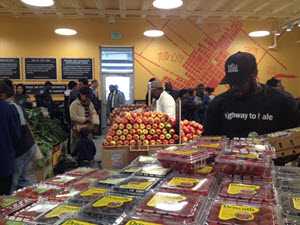Tulane 10 Years after Katrina

Prior to Hurricane Katrina, many African-American neighborhoods were unable to get healthy foods. Fewer supermarkets were located in African-American neighborhoods than in other neighborhoods and this became even worse after the storm.
To determine whether this problem still existed, researchers continued their study of supermarkets in post-Katrina New Orleans. Before the storm in 2005, the city had 31 supermarkets. By 2007, New Orleans only had 15 supermarkets, but by 2014 the number had increased to 32. Additionally, access to a supermarket in African-American neighborhoods in 2014 was not significantly different than in other racially mixed neighborhoods. This research by the Tulane Prevention Research Center (PRC) is important because it shows that improvements in supermarket access are occurring, especially for groups that previously could not get a wide variety of foods, including healthy foods. This result is an average across all neighborhoods in the city. A number of neighborhoods, however, including the Lower Ninth Ward, are still lacking an accessible supermarket.
According to Tulane PRC researchers, the recent increase in supermarkets may have been due in part to the city’s Fresh Food Retailer Initiative (FFRI), a program designed to make fresh foods easier to get in underserved communities.
For more information visit:
- 10 Years Later: Changes in Food Access Disparities in New Orleans since Hurricane Katrina,” released August 2015, Journal of Urban Health.
- Tulane Prevention Research Center (PRC) website.
- State and Local Program - Nutrition Strategies – includes strategies to increase access to healthier foods and beverages in retail.
- Page last reviewed: September 24, 2015
- Page last updated: September 24, 2015
- Content source:


 ShareCompartir
ShareCompartir